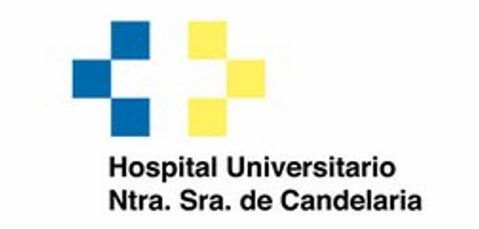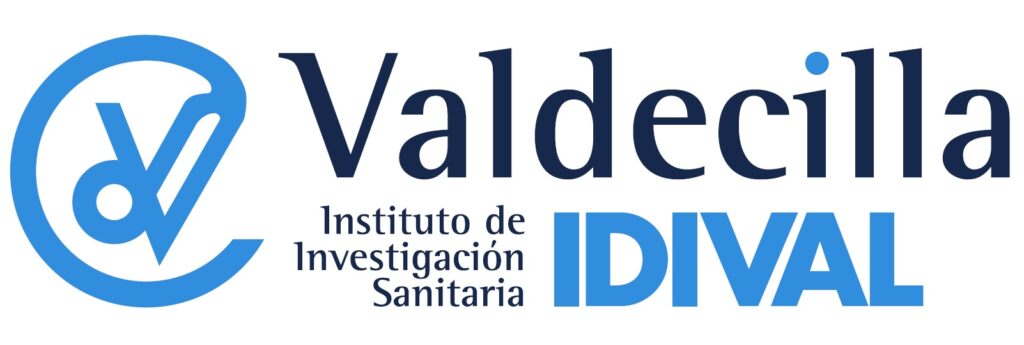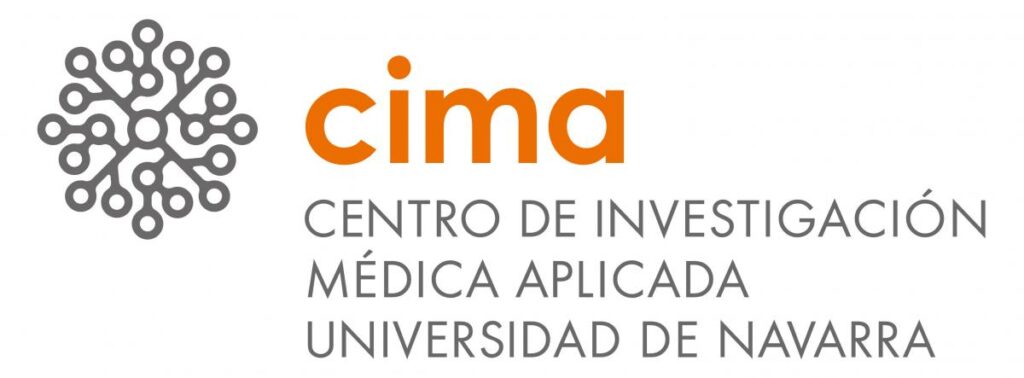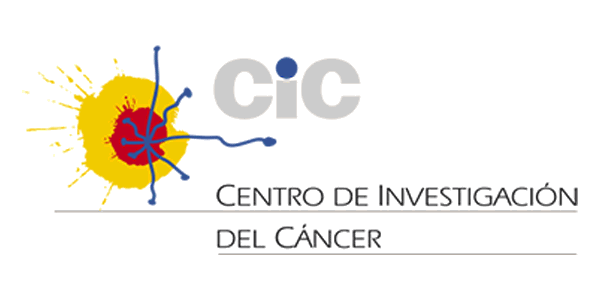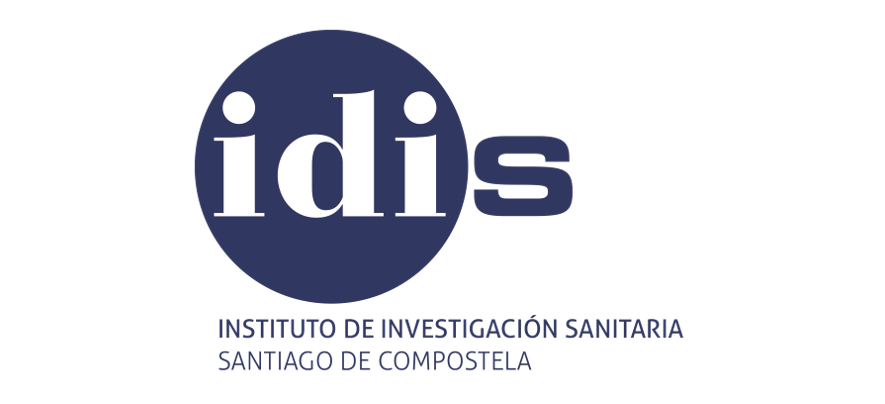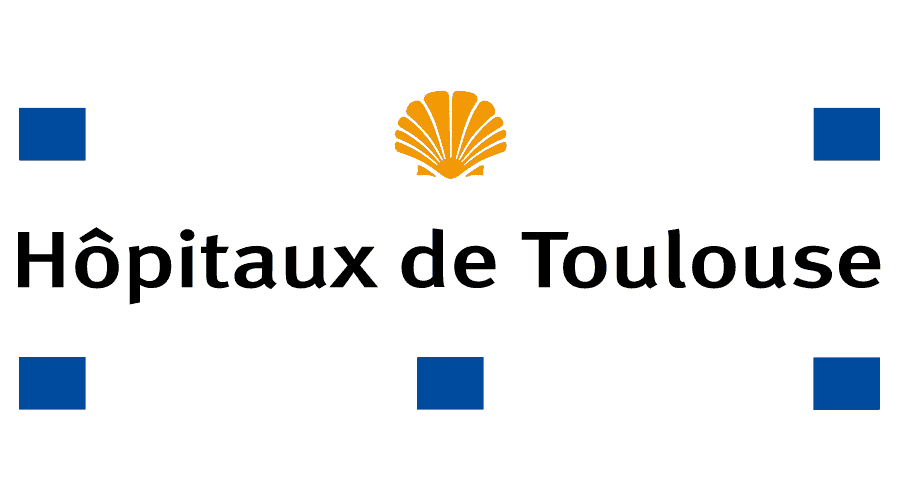Genome One Reports
Discover the web platform with which we deliver our bioinformatics results
Home " Genome One Reports
Genome One Reports
Visualisation is an essential component for the correct interpretation of results after bioinformatics analysis. However, the large amount and complexity of the data obtained is a major challenge for many users.
Therefore, we deliver the results of our bioinformatics analyses through our Genome One Reports platform, an intuitive web interface capable of handling large datasets allowing the review and visualization of the results in a simple way.
Features
Easy to use
Genome One Reports is very easy to use and requires no bioinformatics expertise on the part of the user.
Review of variants
Allows for interactive and collaborative review of variants by different team members.
Own databases
Allows the creation of databases of previously reviewed and catalogued variants.
Multiple options
- Custom filters and views
- Exportable tables and figures
- Automatic report generation
Documentation
We can perform bioinformatics analysis from different files depending on the sequencing technology used:
- Illumina: FASTQ, BAM and VCF
- MGI: FASTQ, BAM and VCF
- Ion Torrent: VCF
You can send us your raw files on a hard disk or share them via FTP. If you have any questions please contact us by sending an email to info@dreamgenics.com or calling 985 088 180 and we will help you.
Genomic analysis
Genome One Reports shows you in an organized way the information of each analysis (summary, variants, gaps, callabilities, outputs, etc.).
In the variant index screen you will be able to carry out the review of variants and perform filtering through the multiple options available.
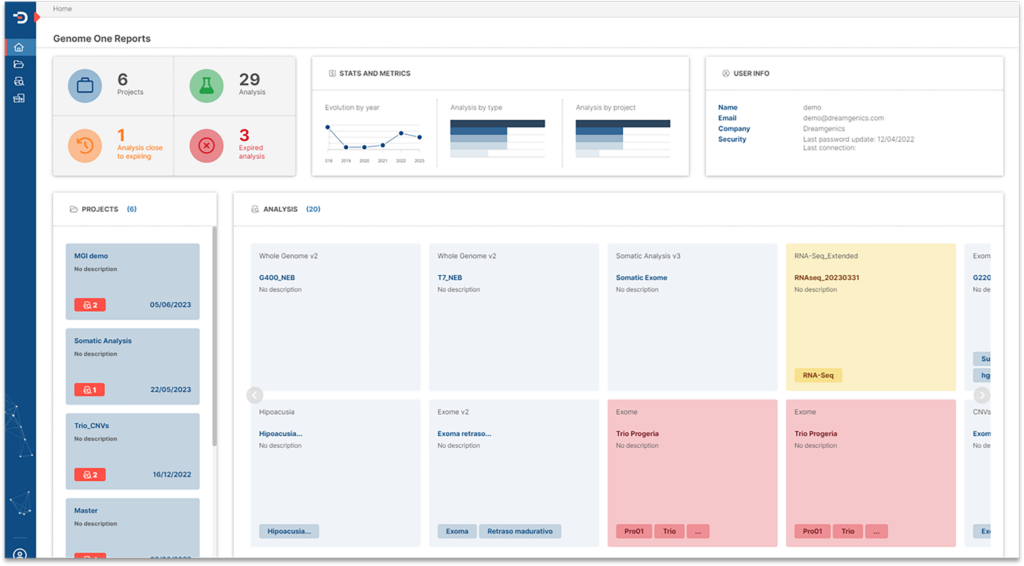
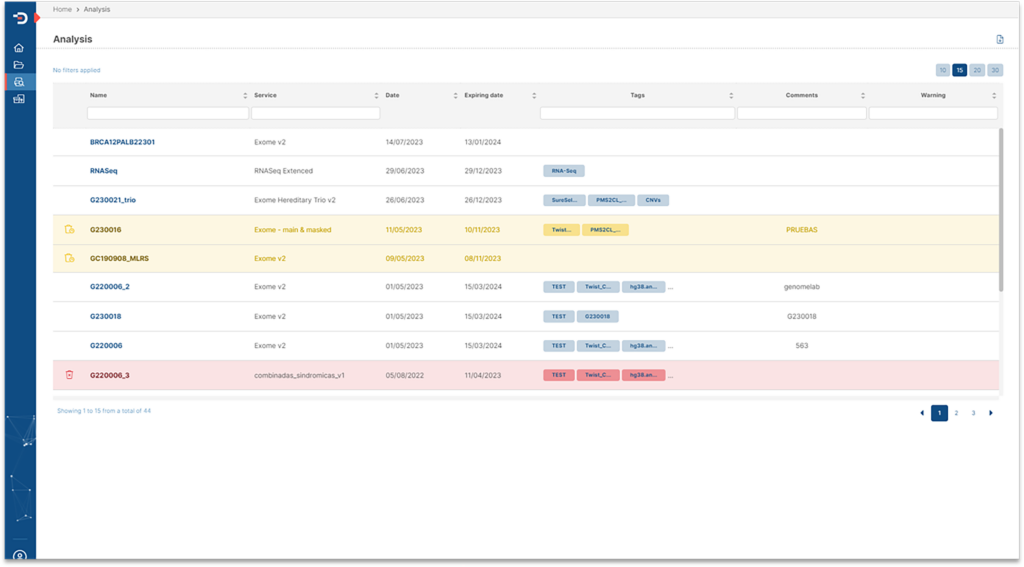
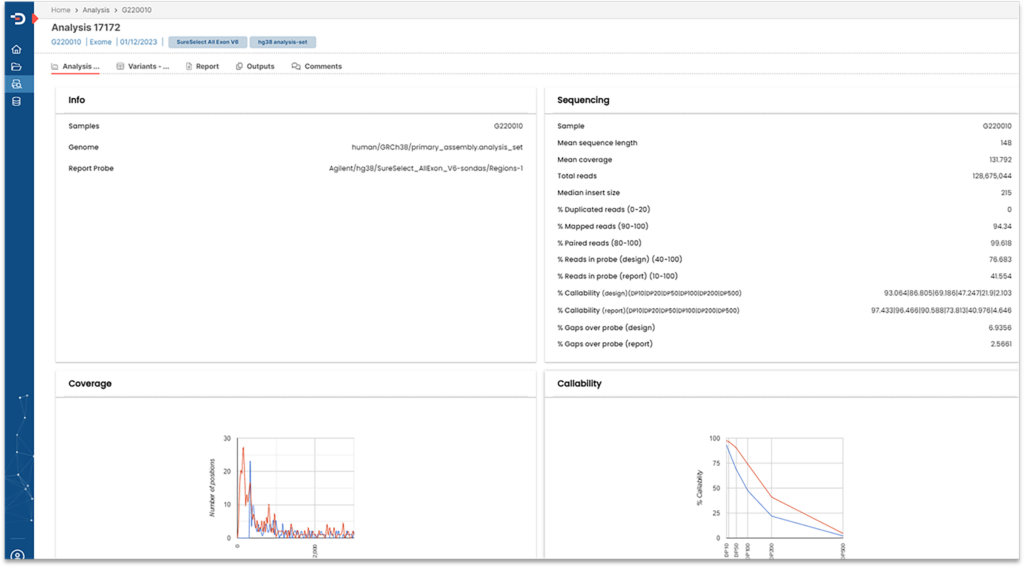
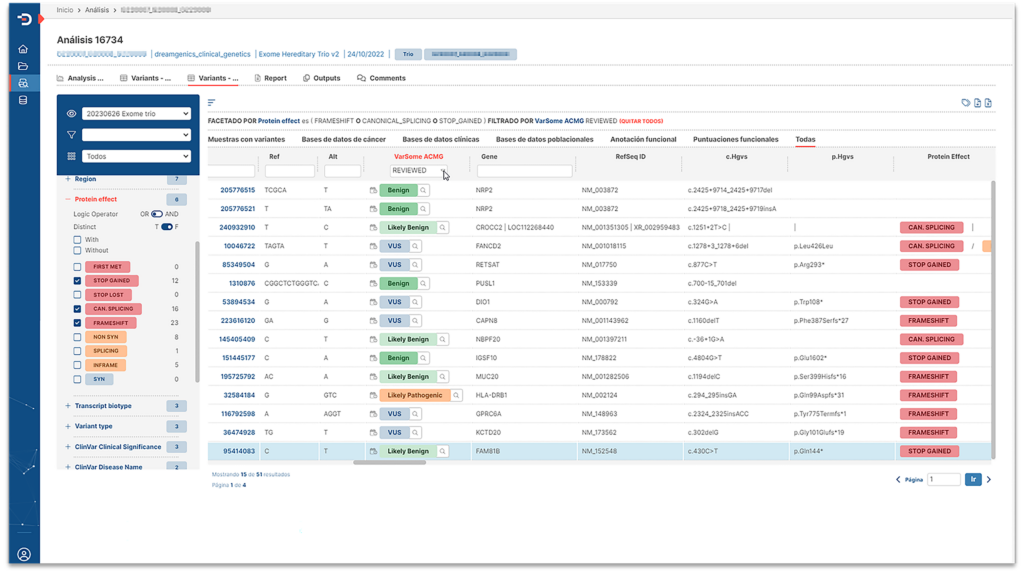
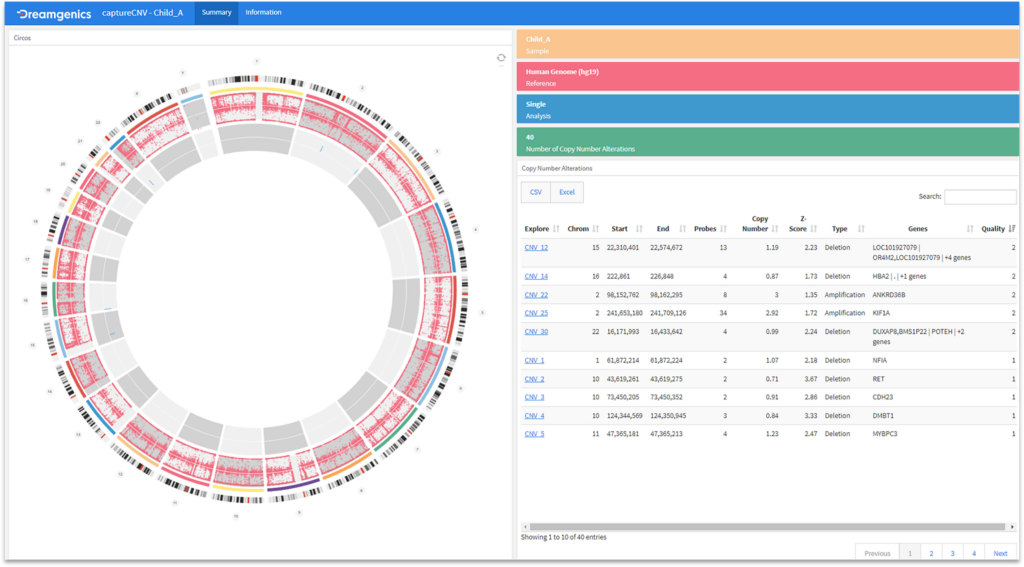
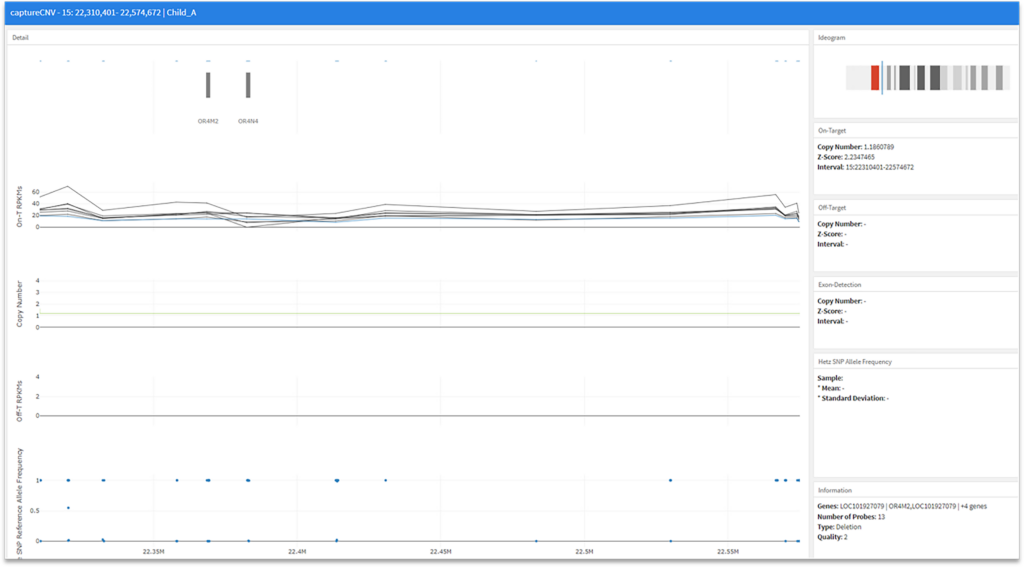
Transcriptomic analysis
The RNA-Seq results are displayed organized in three tabs (Summary, Differential Analysis and Pathway Enrichment).
All information is represented in graphical and tabular format. In addition, many of the graphs are interactive, allowing you to zoom in on the parts that are most interesting to you.

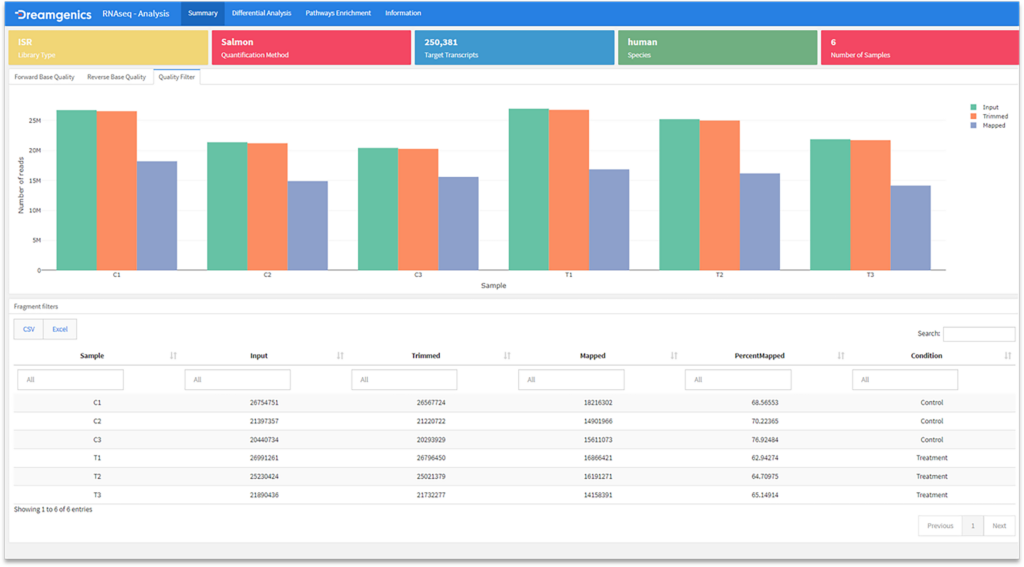
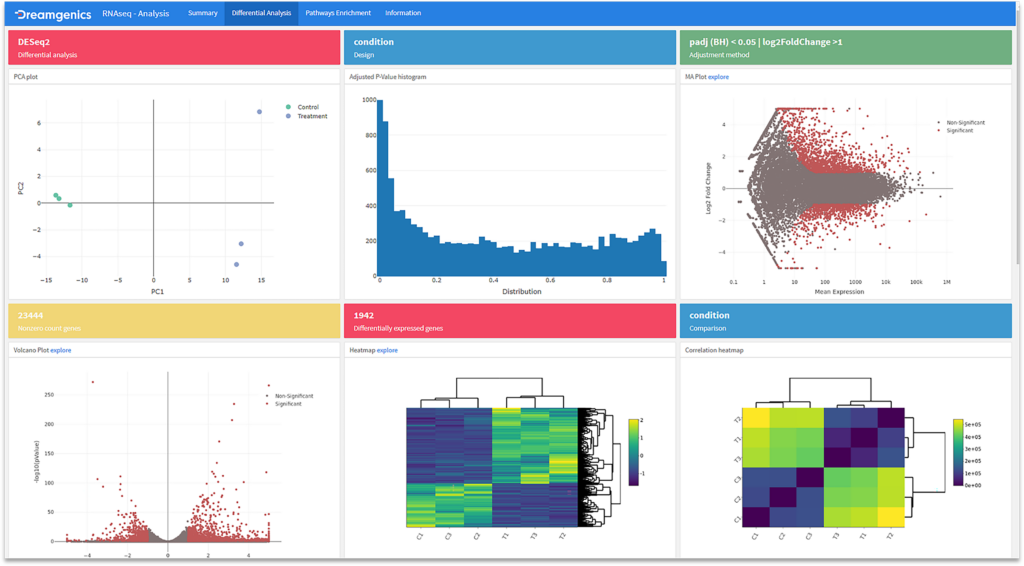
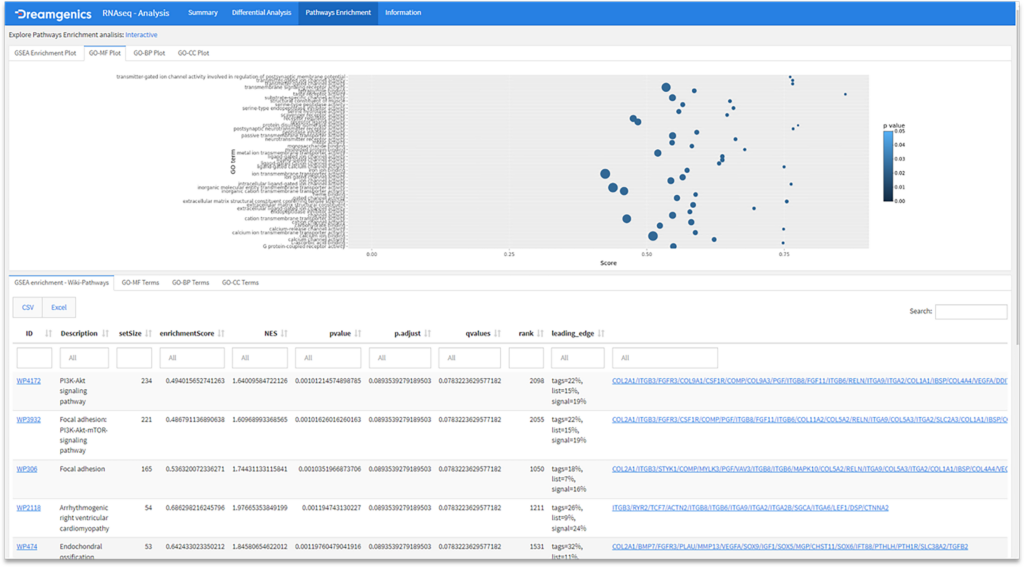
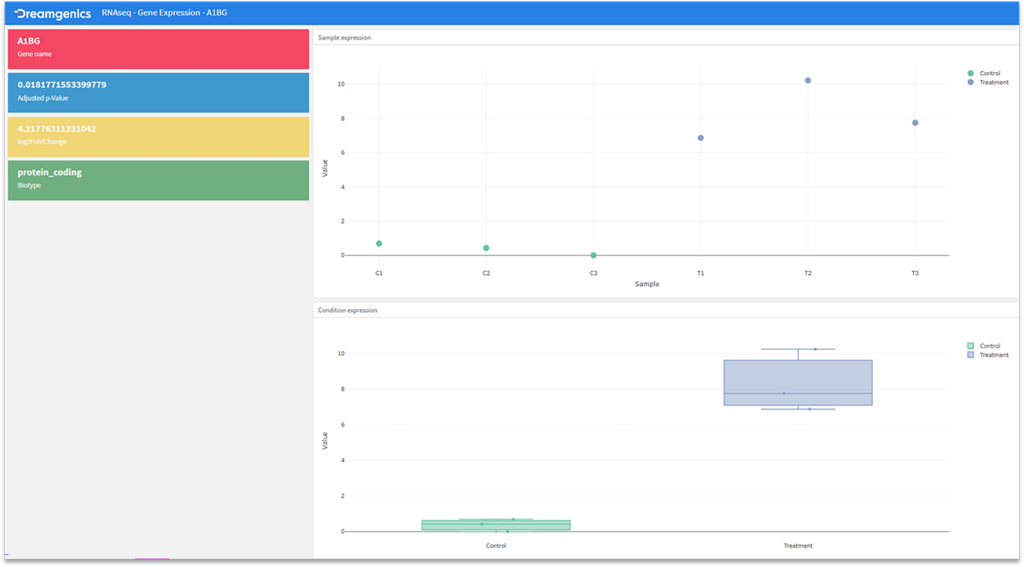
Publications
Visit the Publications section to see the works in which we have participated.

Next-generation sequencing reveals remarkable genetic stability in primary and corresponding recurrent intestinal recurrent-type sinonasal adenocarcinoma
Head & Neck 2024
Recurrent intestinal-type sinonasal adenocarcinoma (ITAC) can occur several years after primary treatment and with different...

Characterization of a Preclinical In Vitro Model Derived from a SMARCA4-Mutated Sinonasal Teratocarcinosarcoma
Cells 2024
Sinonasal teratocarcinosarcoma (TCS) is a rare tumor that displays a variable histology with admixtures of epithelial, mesenchymal, neuroendocrine and germ cell...

Next-generation sequencing improves precision medicine in hearing loss
Front Genet. 2023
An early etiological diagnosis of hearing loss positively impacts children's quality of life including language and cognitive development. Even though...

